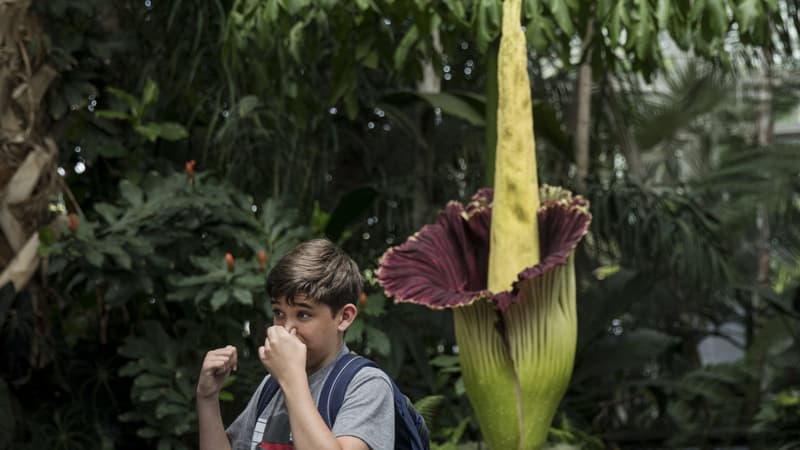Its smell is reputed to be particularly annoying and, paradoxically, it is precisely what attracts the curious. At the botanical garden in Adelaide, South Australia, several thousand people have already thronged to witness the “corpse flower” bloom that began on January 8 for about two days.
As expected, the specimen gives off an extremely nauseating odor, which specialists compare to that of a “dead rat” and which other visitors consider close to “stinking” feet or cheese, reports the guardian.
“The scent is meant to attract a pollinator that may have visited another flower,” explains Matt Coulter, the horticulturist in charge of plant development within the garden, who admits to having a bit of discomfort smelling the scents.
a rare bloom
The flowering cycle of this plant native to the island of Sumatra, Indonesia, takes several years. This new shoot is therefore an event, especially as the “amorphophallus titanum” plants, also known by the vernacular names “anum titan” and “titan phallus”, are reputed to become particularly massive during their flowering.
At first, “a small tuber is formed, then this tuber has the ability to grow to be 150kg,” Matt Coulter details. “Our largest plant so far weighed 75 kg and was 2.60 meters tall.”
The professional indicated Monday morning that the odor was supposed to dissipate by the end of the day before the entire structure of the plant completely withered away by the end of the week.
The specimen will then be dormant for several years before blooming again. This event brings more and more spectators with each repetition, explains the horticulturist.
“Corpse flowers” are threatened by the deforestation of tropical forests in Indonesia, in particular due to the development of palm oil exploitation. The plant has been considered “endangered” since 2018 and there are less than 1,000 wild specimens left to date according to the guardian.
Source: BFM TV


